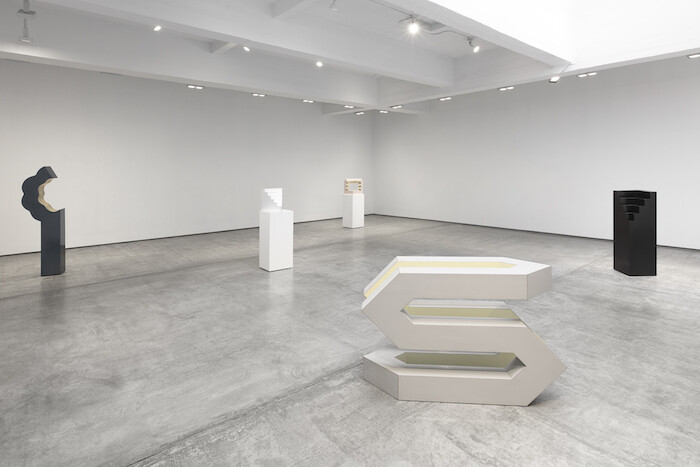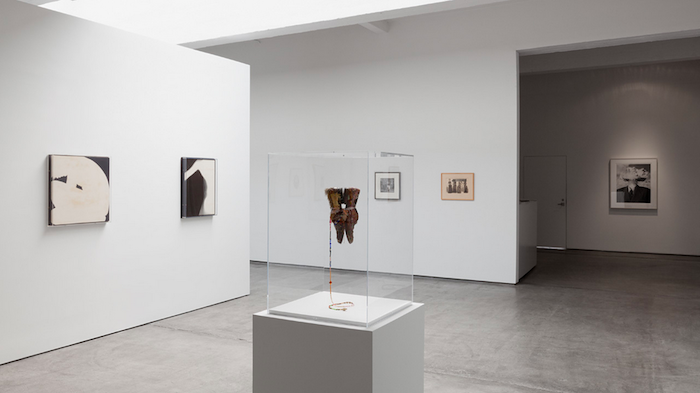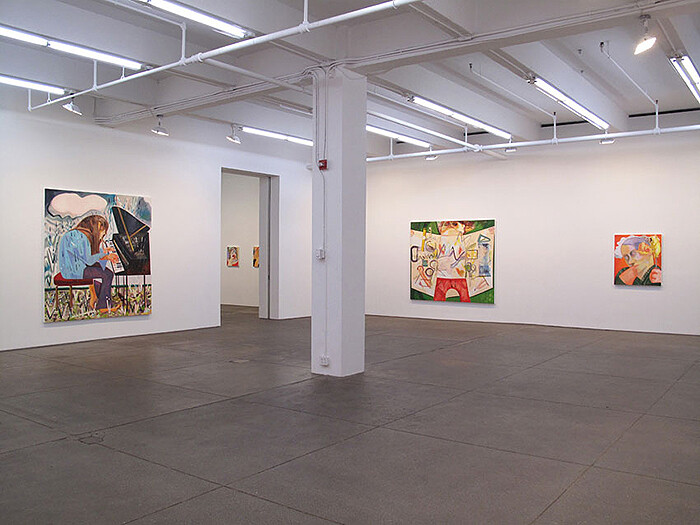Categories
Subjects
Authors
Artists
Venues
Locations
Calendar
Filter
Done
November 10, 2017 – Review
Douglas Huebler’s “Works from the 1960s”
Kim Levin

“The world is full of objects, more or less interesting; I do not wish to add any more. I prefer, simply, to state the existence of things in terms of time and/or place.” That once startling, now iconic statement by Douglas Huebler (1924–1997) was crucial to the foundation of Conceptual art. It was his contribution to Seth Siegelaub’s “January 5 – 31, 1969,” the exhibition without objects that launched Conceptualism. With those sentences, aimed at an art world dominated by Minimalist objects, Huebler announced that art was no longer an object: it was an idea, documented by means of language, photographs, or diagrams. It was also a matter of time and space. He was the eldest and most famous of the Conceptualists—including Robert Barry Joseph Kosuth, and Lawrence Weiner—who participated in that objectless exhibition, but in retrospect he was also the most elusive, puzzling, and least understood.
Almost half a century later, the current exhibition is not about what Huebler went on to do after that announcement—his “Variable” series, “Location” series, and “Duration” series (all begun in 1969)—and his quixotic attempt to document everyone on earth. Instead it offers the work he made shortly before that revelation: the quasi-Minimalist objects that …
June 25, 2015 – Review
Bruce Conner
Kevin Hatch

Bruce Conner used to give fits to museums and galleries. He exasperated William C. Seitz when he served as his consultant for the landmark 1961 exhibition “The Art of Assemblage” at the Museum of Modern Art, New York, which culminated in the artist dumping a box of junk at the doorway during the show’s opening (an attempt to demonstrate to the curator what “real” assemblage was). In 1964, he fatally poisoned his working relationship with his longtime New York gallerist Charles Alan by handing him a box of random objects to show in lieu of new work. And, in the 1970s, with an idea well ahead of its time, he insisted on a cut of the “box office” for a planned mid-career retrospective at what is now the San Francisco Museum of Modern Art. (He was deadly serious, and his intransigence ultimately scuttled the show.) Conner died in 2008, but it is fun to imagine what new aggravation, were he still around, he might inflict on those currently planning his major retrospective, jointly organized by MoMA and SFMOMA and set to open in July 2016. In the meantime, Paula Cooper Gallery offers an elegant if rather solemn show of Conner’s …
January 29, 2014 – Review
Liz Glynn’s “On the Possibility of Salvage”
Ginny Kollak

The pants belonging to the “friend” of the eighteenth-century Welsh pirate Captain Howard Davis were apparently very tiny. Their sculptural replica, crafted from painted papier-mâché and complete with a petite button fly, now sits in a storage box made of birch in the Tenth Avenue space of the venerable Paula Cooper Gallery, alongside a large, floppy-armed, double-breasted overcoat. As the story goes—when Captain Davis landed at the Portuguese colony of São Tomé, a shipmate went ashore with a bag of second-hand clothes to sell to the “natives.” One can only imagine the small-bottomed man’s shocked expression when the crowd gathering on the beach made off with the goods instead. Black Suit from a friend of Capt. Howard Davis (Stolen) (all works 2013)—one of the new pieces on view in Los Angeles-based artist Liz Glynn’s New York solo debut “On the Possibility of Salvage”—exemplifies the artist’s careful balance between humor and pathos, politics and poetry. Taking the themes of piracy, smuggling, wreckage, and recovery as a starting point, Glynn stages an assortment of papier-mâché sculptures in the gallery, which represent either salvaged or seized (depending on one’s perspective) objects across a spectrum of times and cultures.
Why does one become a pirate? …
October 14, 2012 – Review
Walid Raad & David Diao
Stephen Squibb

A friend once complained that contemporary curating is too conceptual. The goal, he said, ought to be the collection of suggestive affinity—this reminds me of this. If the conversation between works is too clear, or too overdetermined by the frame of the show, the energy dissipates, and individual pieces become instances of an overarching idea, instead of generating ideas themselves. Better to pursue electric potential than abstract rigor.
Thus the difficulty for the curator is twofold. To maintain sensitivity to the work while navigating the labyrinthine bureaucracy and endless paperwork of the profession can be difficult. And even if this sensitivity is sustained, the bias is towards single artist statement shows or large group recitals—usually starved of opportunity in the first case, and diluted in the second—can deflate curatorial impact.
As has been the case throughout history, however, in the rarified air where commercial exchange becomes something more like courtly pageantry, a relative freedom prevails, and occasionally we are treated to masterful displays like the one currently at Paula Cooper in Chelsea. Walid Raad and David Diao is an immensely audacious pairing; not because the artists are so different or so similar, but because the simple formal resonance between the two blooms …
May 7, 2012 – Review
New York gallery openings
Nickolas Calabrese

The hot city summer is just around the corner, the Knicks are mercurial as ever, and labor union art handlers are still out of work. New Yorkers have reason to complain. An apt occasion to gripe about the Scrooge McDucks of the art world came and went: the first New York edition of Frieze. The fair also provided galleries with the salacious opportunity to show just how garish they can really be. However, with all of the social and political opposition to opulent displays of the ultra-wealthy, it should come as no surprise that many galleries did not take that route this May. But changes in the art world are bound to occur at moments like this: call it historical inevitability. Whatever the causal factors may be, several galleries in NYC have mounted eloquent and penetrating exhibitions, and the shows represented here are laden with the spirit of a protest, each one more singular and exciting than the next.
Heavily hyped for her first outing at a new gallery is Dana Schutz’s “Piano in the Rain” at Friedrich Petzel Gallery. Schutz’s pictorial fictions are replete with her familiar brand of alterity, though in this sequence the figures seem more comprehensive than …